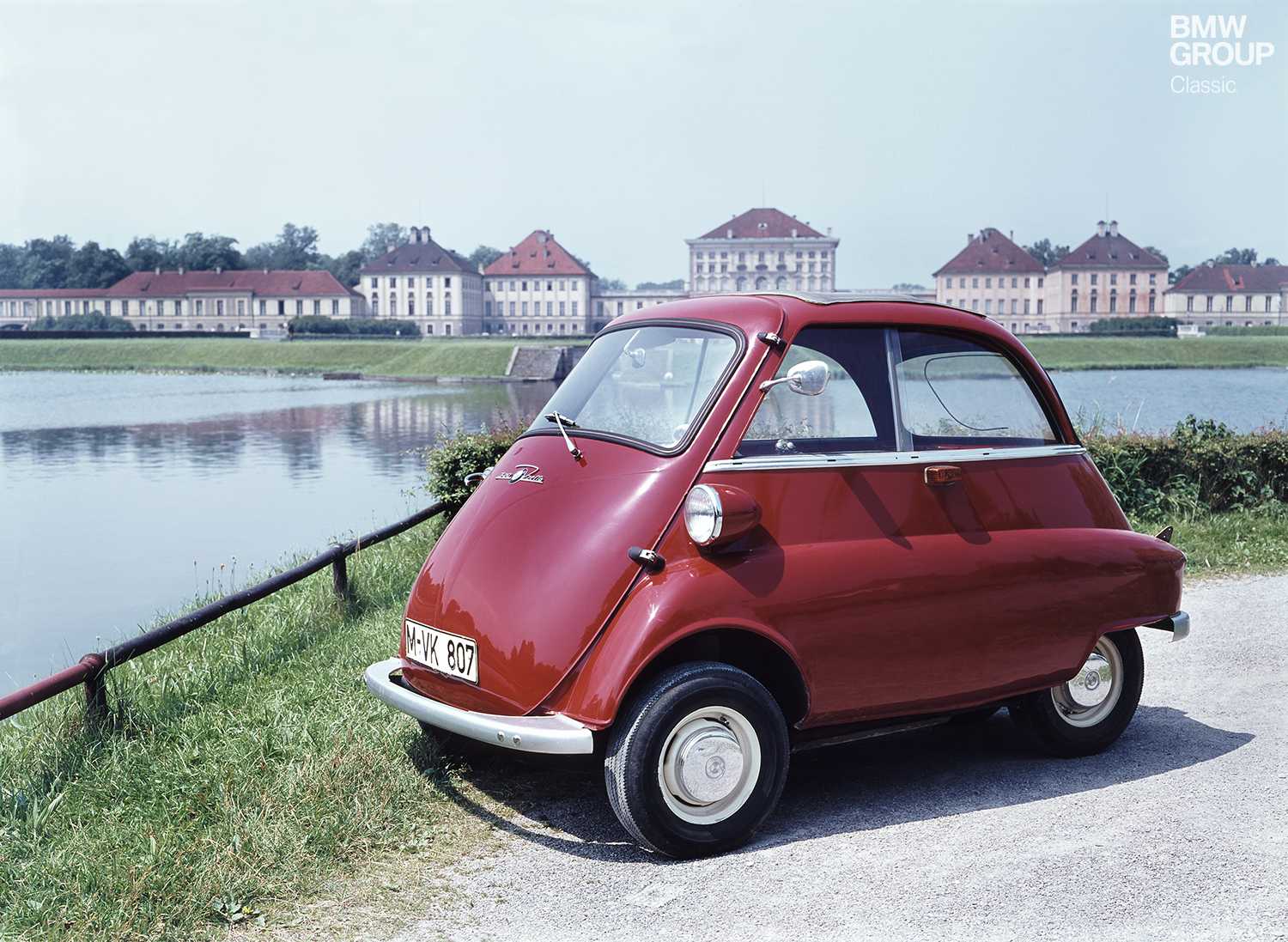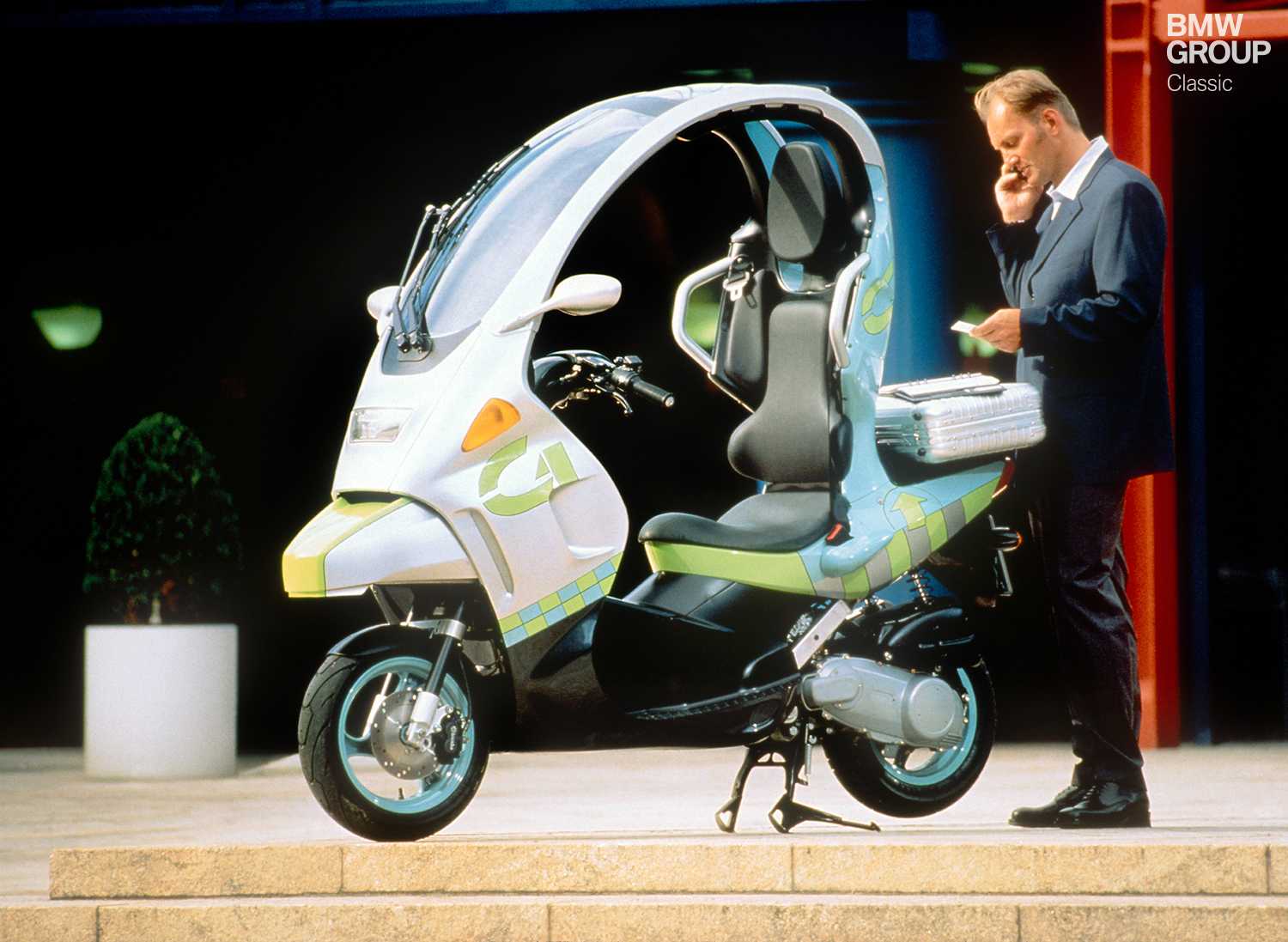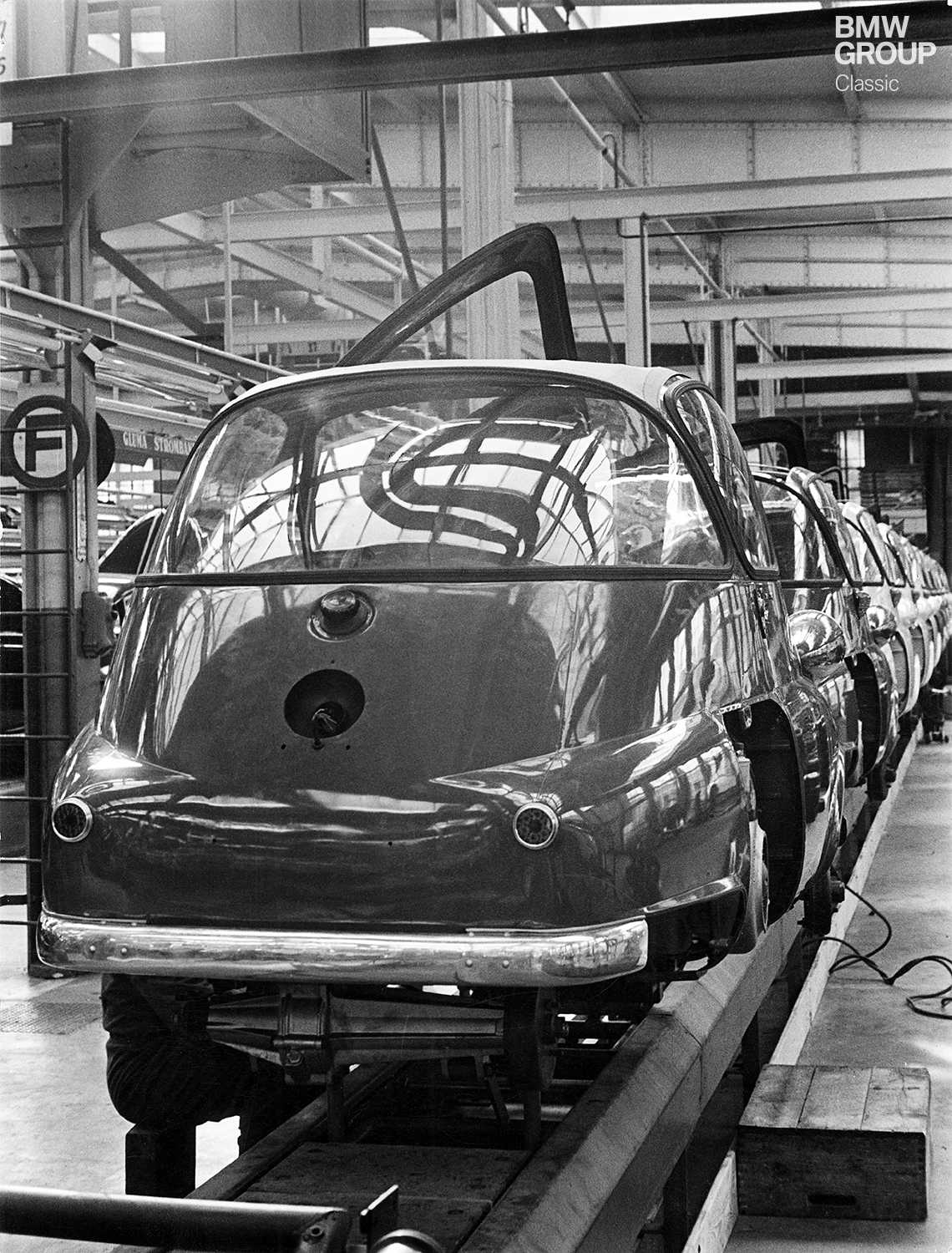Building small cars is hardly rocket science, some might say. All you have to do is shrink conventional vehicles until the price is right, squeeze yourself into the result and job done. They might look a bit strange, but there’s no other way.
These two examples of genuinely revolutionary concepts beg to differ.
ISETTA – LA DOLCE VITA IN PICCOLO.
The idea for the Isetta emerged in Italy as the country began to look forward again after the Second World War. At the time, Iso – the firm behind it – built refrigerators rather than cars. Iso’s owner, Renzo Rivolta, was brimming with new ideas, particularly with regard to the engine. Legend has it he started with someone sitting comfortably on a sofa. He then added a passenger for company, gave the pair a roof and heating to protect them from inclement weather and stuck on some wheels to move them effortlessly along their way. Four wheels to be exact. Because Signor Rivolta knew that three-wheelers are all too liable to tip over. By making the rear wheels skinny he eliminated the need for an expensive differential, he tucked the engine behind the seat and he moved the door forward. Because the steering wheel was now in the way, he ensured that it could be folded to one side. Perhaps Rivolta still had his fridges at the back of his mind, but the result of his tinkering was astounding. It was basically impossible for there to be less car than his new Isetta. Revolutionary was the only word.
In the mid-1950s, the pioneering microcar attracted BMW’s attention, the company seeking a model to prop up its product line-up. They left the jittery two-stroke engine behind in Italy, though, and opted instead for the comparatively delicious and beefy sounding single-cylinder unit from the R 25 motorcycle. Its princely twelve horsepower propelled the Italian/Bavarian two-seater sofa briskly down the road. You could park side-on to the road if need be, with the door then opening rather handily onto the pavement. Holders of the old Class 4 licence in Germany (for motorcycles and mopeds) were pleased, because they were allowed to drive the 250cc Isetta.
Praise descended from every quarter. Competition from other microcars and scooters had increased considerably by this time, but the quality offered by BMW was beyond most others. Reasonably priced at just 2,550 marks, the Isetta was soon a familiar sight on the road. It underwent a facelift in the autumn of 1956 and, with quality and sturdiness now enhanced, sold marvellously. Germany’s emerging affluent middle class, for example, embraced it enthusiastically as a second car.
C1 – PROTECTION ON TWO WHEELS.
Motorcycles are manoeuvrable and easy to park, which makes them ideal in heavy city traffic; while cars get stuck in jams and impede each other’s progress, slim two-wheelers slip nimbly through the gaps. Once you’ve reached your destination, it’s quick and easy to find a spot to park. So far, so good.
Unfortunately, motorcycles are somewhat lacking in passive safety features and, before going anywhere, the rider needs to don appropriate clothing. Reinforced leather is really not what the average city dweller wants to wear to a meeting, though, especially if it’s only a couple of miles away. This is precisely how the makers of the C1 positioned their creation, leaving onlookers in disbelief. They had never seen a motorcycle like this before. Or was it actually a “single-track car”?
With scooter-like performance and operation, the C1’s controls are remarkably straightforward; open the throttle and brake – there’s not much more to it than that. It has a continuously variable transmission and 15 – 18 hp is enough to achieve a top speed of 110 – 112 km/h (just under 70 mph). What is unique is the safety concept involving a narrow roof. It provides protection from the weather and, teaming up with the crash element over the front wheel and a seat belt, also a level of impact protection unprecedented on a motorbike. It’s not even necessary to wear a helmet. Introduced in 2000, the C1 was a trailblazing, futuristic city runabout for the new millennium.
THE LEGACY OF A REVOLUTIONARY SPIRIT
More than 161,000 Isettas were built between 1955 and 1962. It had no successor because the age of the microcar had run its course and the shortage of parking spaces wasn’t serious enough to warrant a solution in this mould. As for the C1, almost 34,000 people bought one between 2000 and 2003, and yet here too there was no follow-up. However, the two revolutionaries still have their own dedicated communities of fans and good Isettas have long commanded top prices.
Ultimately, everything has its day – including new ideas. Not all products can live forever. In both these cases, however, having the courage to abandon tried-and-tested solutions and explore new avenues paid off handsomely.




